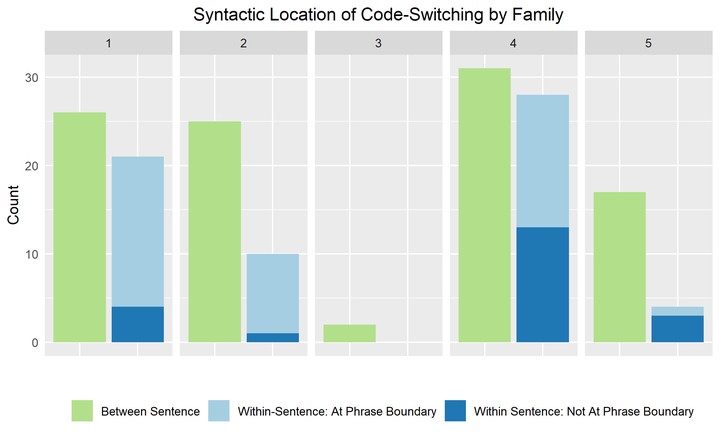
Abstract
In an environment where people speak multiple languages, it is common for those languages to be mixed together in everyday speech. This phenomenon, called code-switching, is prevalent in bi- and multilingual settings. When and how does code switching affect language acquisition? There is some evidence that exposure to code-switching affects vocabulary development (e.g. Byers-Heinlein, 2013), although not all studies have reported such effects (Bail, Morini, & Newman, 2015). Recent experimental work suggests that some types of code-switches (e.g., switches from the dominant to non-dominant language, and those within a prosodic phrase) are more difficult for infants to process than other types (Byers-Heinlein et al., 2017; Potter et al., 2018). Moreover, parents report different motivations for engaging in code-switching (Byers-Heinlein, 2017). However, as most of these studies were based on parent report, laboratory play sessions, or experimenter-created stimuli, we still have a poor understanding of when and why code switching occurs in parents’ natural, everyday speech to infants. The current project aims to address this research gap by analyzing an existing corpus of full-day home speech recordings made with the Language ENvironment Analysis (LENA) system. Participants were 21 French-English bilingual families with a 10-month-old infant living in Montreal, 15 of whom also contributed recordings when the infant was 18-months old. We will identify instances of parental code-switching, and record the syntactic location (i.e., inter- vs. intra-sentential), and the direction of the language switch. Moreover, we will code the apparent reason for the switch, for example teaching new vocabulary, accommodating infants’ perceived vocabulary gaps, or translating an entire utterance. This project will provide the first in-depth investigation about the characteristics of code-switching that parents naturally produce with their infants.